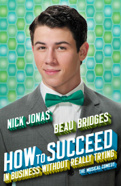Rob Ashford on Why He Believes in Daniel Radcliffe and How to Succeed
About the author:
Every minute counts in a musical directed and choreographed by Rob Ashford. The Tony winner (and four-time nominee) knows exactly how to grab an audience’s attention with perfectly paced musical numbers, hilarious solo bits and acrobatic choreography. As associate director at London’s Donmar Warehouse, Ashford has tackled heavyweight fare such as Parade and A Streetcar Named Desire. On Broadway, he’s spent the past couple of years deeply imbedded in the swinging 60s, first with the Broadway.com Audience Award-winning revival of Promises, Promises and now with a new production of Frank Loesser’s Pulitzer Prize-winning 1961 musical How to Succeed in Business Without Really Trying. Below, Ashford shares his thoughts on why How to Succeed remains a classic and how his production was shaped by the strengths of his 21-year-old leading man, Daniel Radcliffe.
![]()
One of the main reasons I was drawn to How to Succeed is the musical’s distinct resonance in today’s society. It is set in the early 1960s, a time when the American Dream was still alive and thriving. Americans fought for their ideals because they knew them to be attainable; possibilities were endless because the glass ceiling didn’t exist. It was the calm before the storm, before the Cuban Missile Crisis, John F Kennedy’s assassination, or the Vietnam War. The country was brimming with a “can-do” spirit. Americans carried within them an unshakable optimism.
This spirit of the early 60s is at the heart of How to Succeed. Each of the characters possesses an intrinsic drive to attain his goals. Yes, the musical is a satire, but even the female characters, who have to contend with sexism in the corporate work environment, embody this spirit. These women aren’t victims; they possess just as much strength and determination as the men. They may be singing about finding their prince or keeping a husband’s dinner warm, but they are just as crafty and clever as the men in finding a way to make their dreams a reality. The characters are tenacious and willful, and they have a deep belief in themselves. No matter what obstacle they face, they never lose sight of their goals.
Daniel Radclliffe’s character, J. Pierrepont Finch, is the most determined of them all. Armed with a guidebook called How to Succeed In Business Without Really Trying, he follows the book’s step-by-step rules for climbing the corporate ladder. Like the world of the musical itself, Finch’s book guarantees success; it makes the impossible possible, and instills in Finch a belief that he can do whatever he sets his mind to.
Dan could not be a better fit for Finch. He’s the type of guy who would leap off a cliff and figure out how he’s going to land halfway down. Even though he once told me he couldn’t dance at all, he threw himself into rigorous training with determination and fearlessness. And now, Dan leads the show’s climactic production number, “Brotherhood of Man,” with joy and confidence.
Dan brings his own youthful energy to Finch. Like Dan himself, his Finch doesn’t sit back and contemplate; he dives into a problem and solves it. Dan is at once innocent and fiercely intelligent. This particular energy is what is so joyous for me about having Dan and Rose Hemingway (Rosemary) and the other younger people in the show: They give a modern spin to the period characters they’re playing.
This youthful spirit that Dan and the rest of the cast possess is precisely what connects How to Succeed to audiences today. Finch rises from window washer to chairman of the board, all by believing in his motto, “I Can”—a great reminder of the power of determination and optimism.

